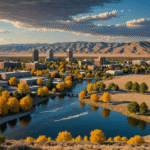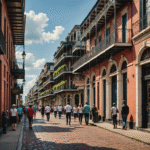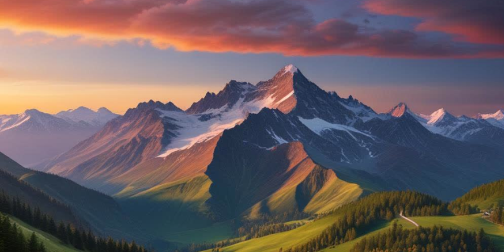
Paragliding Over the Swiss Alps:
Paragliding over the Swiss Alps is not just an activity; it’s an exhilarating experience that combines breathtaking views, adrenaline, and the kind of adventure that makes for unforgettable memories. Whether you’re a couple seeking romance in the skies or a family looking for fun, this guide will help you explore the best of what paragliding over the Swiss Alps has to offer in 2024.
A Brief History of Paragliding in the Swiss Alps:
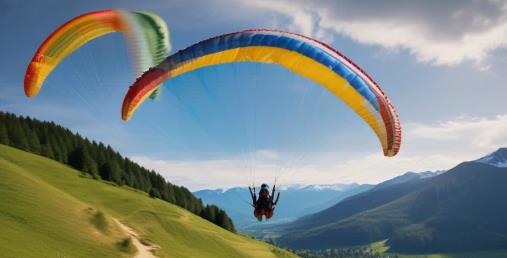
Paragliding as we know it began in the late 20th century, but the roots of flying in the Alps trace back much further. The Swiss Alps have always been a playground for adventurers with their majestic peaks and stunning landscapes. Early pioneers used parachutes for recreation, but it wasn’t until the 1980s that paragliding became popularized. The combination of favorable weather conditions and stunning scenery makes Switzerland one of the top destinations for paragliding enthusiasts.
Paragliding has become one of the most thrilling and popular adventure sports in the Swiss Alps, attracting locals and tourists alike. The history of paragliding in this stunning region is rich and fascinating, evolving from early parachuting techniques to the modern sport we know today.
Early Beginnings of Paragliding
The roots of paragliding can be traced back to the early 1980s when adventurers began experimenting with parachutes in a way that allowed for controlled flight. Initially, these flights utilized standard parachutes, which offered limited maneuverability. The first significant advancements came from French pioneers who sought to improve the descent methods from high altitudes. They began refining techniques that would eventually lead to what we now recognize as paragliding.
In 1985, a group of French climbers developed the first recognizable form of paragliding by launching from hillsides using specially designed canopies. This innovation allowed them to glide down more safely and efficiently than traditional methods. The slopes of Mieussy in France became a testing ground for these early paragliders, marking a pivotal moment in the sport’s history.
Development and Recognition
The sport gained traction quickly, and by 1987, Switzerland hosted its first unofficial paragliding championship. This event marked an important milestone, showcasing the growing popularity of paragliding as a competitive sport. Just two years later, in 1989, the Fédération Aéronautique Internationale (FAI) recognized paragliding as an official sport and organized the first official world championship in Kossen, Austria.
Switzerland’s unique geography played a crucial role in the sport’s development. With its towering peaks and favorable weather conditions, it became an ideal location for paragliding enthusiasts. The country boasts an extensive network of ski lifts and public transportation, making it easy for pilots to access launch sites across the Alps.
The Rise of Paragliding in Switzerland
Today, Switzerland is considered a paradise for paragliders, with approximately 16,000 active participants in the sport. The combination of breathtaking landscapes and well-established infrastructure has made it a top destination for both novice and experienced pilots. Locations like Interlaken, Zermatt, and Grindelwald are particularly popular due to their stunning views and reliable flying conditions.
The advancements in equipment have also significantly contributed to the sport’s growth. Modern paragliders are designed with improved glide ratios and stability, allowing pilots to soar longer distances with greater control. This evolution has opened up new possibilities for cross-country flying and other adventurous pursuits within the sport.
Cultural Impact and Community
Paragliding has not only become a popular recreational activity but also a vibrant part of Swiss culture. Local clubs and schools offer training programs for beginners while hosting competitions that attract international talent. The camaraderie among pilots fosters a strong sense of community, with many sharing their experiences and tips through various online platforms and social media.
Moreover, paragliding has influenced tourism in Switzerland significantly. Many visitors are drawn to the country specifically for the opportunity to experience flight over its majestic landscapes. This influx of adventure seekers has led to economic growth in regions that cater to outdoor sports, further embedding paragliding into the fabric of Swiss life.
The history of paragliding in the Swiss Alps is a testament to human ingenuity and the desire for adventure. From its humble beginnings with parachutes to becoming a beloved sport embraced by thousands, paragliding continues to evolve while offering breathtaking experiences against some of the most stunning backdrops on Earth. As technology advances and more people discover this exhilarating pastime, it is likely that paragliding will remain a cherished activity in Switzerland for years to come.
Top 10 Things for Couples to Do While Paragliding Over the Swiss Alps:
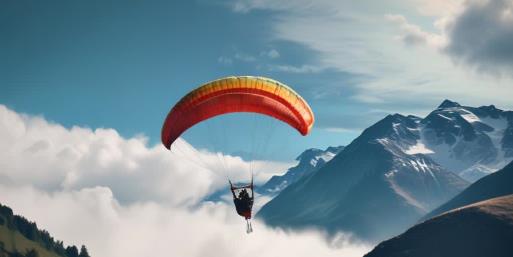
Paragliding over the Swiss Alps is not just about the thrill of flying; it’s also an opportunity for couples to bond, create lasting memories, and experience the stunning beauty of the Alps together. Here are ten engaging activities couples can enjoy while paragliding in this breathtaking region:
Tandem Flights for Two
Experience the thrill of tandem paragliding, where you can fly side by side with your partner. This shared adventure allows you to enjoy the breathtaking views together while an experienced pilot handles the controls. It’s a perfect way to conquer fears and share exhilaration at the same time, making it a memorable bonding experience.Capture Stunning Photos
Take advantage of the picturesque scenery by capturing stunning photos during your flight. Many paragliding companies offer professional photography services, or you can bring a GoPro or smartphone (secured safely) to document your adventure. The backdrop of snow-capped peaks and lush valleys will provide unforgettable memories that you can cherish forever.Enjoy Scenic Picnics Post-Flight
After landing, celebrate your successful flight with a romantic picnic in one of the many scenic spots around the launch site. Pack local Swiss delicacies like cheese, chocolate, and fresh bread to enjoy together while soaking in the stunning mountain views. It’s a delightful way to unwind and reflect on your adventure.Sunset Paragliding
For an extra romantic touch, consider booking a sunset paragliding flight. Soaring through the sky as the sun sets behind the mountains creates a magical atmosphere, perfect for couples looking to add a bit of romance to their adventure. The vibrant colors of the sunset will make for breathtaking views and unforgettable moments.Explore Nearby Mountain Villages
Combine your paragliding experience with visits to charming mountain villages like Mürren or Wengen. These picturesque locations offer cozy restaurants, quaint shops, and beautiful hiking trails—perfect for couples looking to explore together after their flight. Enjoying a meal or a drink in these idyllic settings can be a lovely way to relax after an adrenaline-filled day.Attend Local Festivals
If your visit coincides with local festivals or events, take advantage of these cultural experiences. Many towns in the Swiss Alps host seasonal festivals celebrating local traditions, food, and music. Participating in these events can add an extra layer of fun and connection to your trip.Relax at Spas
After an exhilarating day of paragliding, treat yourselves to a couple’s spa day at one of the local wellness centers. Many spas in the region offer treatments that incorporate local ingredients and techniques, providing relaxation and rejuvenation after your adventures in the sky.Nighttime Paragliding
For adventurous couples looking for something unique, some companies offer nighttime paragliding experiences under the stars. This thrilling option allows you to soar through the night sky with city lights twinkling below—a truly unforgettable experience that adds an element of magic to your trip.Take Control (If You Dare)
Some paragliding instructors allow you to take control of the glider for a few moments during your flight (with guidance). This thrilling opportunity lets you feel what it’s like to steer through the air, adding excitement and engagement to your shared experience.Celebrate with Local Cuisine
After your paragliding adventure, indulge in a romantic dinner at one of Switzerland’s renowned restaurants. Enjoy traditional Swiss dishes such as fondue or raclette while taking in stunning views of the Alps from your table—an ideal way to end a day filled with adventure and romance.
Paragliding over the Swiss Alps offers couples an incredible opportunity not only to experience breathtaking views but also to strengthen their bond through shared adventures and memorable moments. From tandem flights and sunset views to cozy picnics and local cuisine, there are countless ways for couples to enjoy their time together amidst some of nature’s most stunning landscapes. Whether you’re seasoned adventurers or trying something new together, paragliding in Switzerland promises an unforgettable experience that will have you both smiling long after you’ve landed!
Best Nightlife in the Swiss Alps:
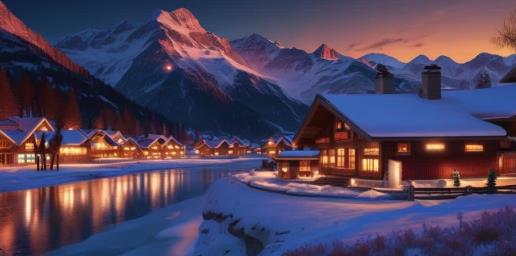
The Swiss Alps are not only renowned for their breathtaking landscapes and outdoor adventures but also for their vibrant nightlife. Whether you’re looking to unwind after a day on the slopes or dance the night away, there’s something for everyone. Here’s an exploration of some of the best nightclubs and nightlife options in the Swiss Alps.
Top Nightclubs in the Swiss Alps
Dracula Club (St. Moritz)
Located within the luxurious Kulm Hotel, Dracula Club is a high-class venue known for its glamorous atmosphere and vibrant parties. It hosts live jazz performances and is famous for its annual jazz festival, attracting international artists. The club’s elegant design and exclusive vibe make it a must-visit for those looking to experience upscale nightlife in St. Moritz.
Location: Plazza Gunter Sachs, Via Maistra 54, 7500 St. Moritz, Switzerland.Pöstli Club (Davos)
This lively nightclub is a favorite among locals and visitors alike. Pöstli Club offers a mix of music styles, from electronic to pop, ensuring a fun night out. It’s particularly popular on weekends, making it a great spot to meet fellow party-goers after a day of skiing.
Location: Pöstli 1, 7260 Davos Dorf, Switzerland.Le Farinet (Verbier)
Known for its vibrant après-ski scene, Le Farinet is a lively bar that transforms into a nightclub as the night progresses. With live music and DJ sets, it’s the perfect place to let loose after hitting the slopes. The atmosphere is always buzzing, making it a favorite among both locals and tourists.
Location: Rue de Médran 2, 1936 Verbier, Switzerland.Club Caverne (Interlaken)
A hidden gem in Interlaken, Club Caverne offers an intimate setting with a unique cave-like ambiance. It features local DJs and themed nights that keep the energy high. The club is perfect for those looking to enjoy good music in a cozy environment after a day of adventure in the Alps.
Location: Hauptstrasse 36, 3800 Matten bei Interlaken, Switzerland.Heat Club (Sion)
This trendy nightclub is known for its modern design and energetic atmosphere. With top DJs spinning electronic music and themed parties throughout the week, Heat Club is a hotspot for nightlife enthusiasts in Sion. It’s particularly popular on weekends when the dance floor comes alive with party-goers enjoying the latest beats.
Location: Rte des Ronquos 122, 1950 Sion, Switzerland.Hive (Zurich)
While not directly in the Alps, Hive is one of Zurich’s most popular nightclubs and worth mentioning for those traveling through the region. Known for its eclectic music selection and industrial-style decor, Hive attracts a diverse crowd looking to dance until dawn. The club features both local and international DJs across various genres from techno to hip-hop.
Location: Geroldstrasse 5, 8005 Zürich, Switzerland.A-Club Spiez (Spiez)
A-Club Spiez is known for its friendly atmosphere and regular events featuring local DJs and live performances. It’s an excellent spot for those looking to enjoy a casual night out with friends while soaking in the local nightlife scene without the crowds of larger clubs.
Location: Simmentalstrasse 50, 3700 Spiez, Switzerland.Jamming Corner (Unterseen)
This lively bar offers an inviting atmosphere with live music performances that range from rock to jazz. Jamming Corner is perfect for couples or groups looking to enjoy good drinks while listening to talented local musicians in an intimate setting.
Location: Bahnhofstrasse 1, 3800 Unterseen, Switzerland.Bar Amadeus (Crans Montana)
Renowned for its vibrant après-ski scene, Bar Amadeus combines great drinks with live music events throughout the winter season. With its cozy yet lively atmosphere, it’s an ideal spot to relax after skiing or snowboarding before heading out to dance at nearby clubs like Monkis or Zerodix.
Location: Rue du Pas de l’Ours 1, 3963 Crans-Montana, Switzerland.Zerodix (Crans Montana)
This bar is famous for its lively ambiance featuring live music and table dancing well into the night—perfect for those looking to have fun after a long day on the slopes! Zerodix also offers an extensive drink menu with various cocktails that keep patrons coming back for more.
Location: Rue du Pas de l’Ours 2-4, 3963 Crans-Montana, Switzerland.
The Swiss Alps offer an exciting nightlife scene that complements its stunning natural beauty and outdoor activities perfectly. From upscale clubs like Dracula Club in St. Moritz to cozy bars like Jamming Corner in Unterseen, there’s something for every taste and preference. Whether you’re looking to dance until dawn or enjoy live music with friends over drinks, these venues provide unforgettable experiences that will enhance your Alpine adventure!

Trending Places to Visit While Paragliding:
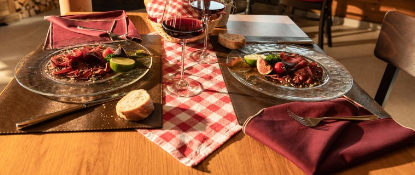

Paragliding in the Swiss Alps offers not only an exhilarating experience but also the chance to explore some of the most stunning locations in the world. Here are some trending places that are must-visits for paragliding enthusiasts and adventure seekers alike:
1. Interlaken
Interlaken is often regarded as the mecca of paragliding in Switzerland. Nestled between Lake Thun and Lake Brienz, it provides breathtaking views of both lakes and the surrounding mountains. The area is well-equipped with numerous paragliding schools and experienced instructors, making it an ideal spot for both beginners and seasoned pilots. The combination of vibrant colors from the lakes and the majestic peaks creates a stunning backdrop for your flight. Many paragliders take off from nearby mountains like Harder Kulm, ensuring an unforgettable experience.
2. Zermatt
Famous for its iconic Matterhorn, Zermatt offers a unique paragliding experience where you can soar directly in front of this majestic peak. Flights here provide a different perspective of the Alps, allowing you to appreciate the rugged beauty and possibly spot some local wildlife during your descent. The car-free village atmosphere adds to the charm, making it a perfect destination for couples and adventure seekers alike.
3. Lauterbrunnen
Known for its dramatic landscapes, Lauterbrunnen is home to stunning waterfalls and lush green valleys. Paragliding here allows you to glide alongside some of Switzerland’s most picturesque scenery, including the famous Staubbach Falls. The valley’s high cliffs provide excellent launch points, making it a favorite among paragliders looking for breathtaking views combined with thrilling flights.
4. Lucerne
Lucerne is not only famous for its beautiful lake but also offers fantastic paragliding opportunities from nearby mountains like Rigi and Pilatus. The views from above include lush greenery, sparkling lakes, and charming Swiss architecture. Paragliding in Lucerne combines adventure with cultural exploration, as you can easily visit historical sites and enjoy local cuisine after your flight.
5. Grindelwald
Grindelwald is another popular destination for paragliding enthusiasts, known for its spectacular mountain scenery and access to some of the most famous peaks in the Bernese Oberland region. Flights here often provide views of the Eiger North Face and other iconic mountains. The combination of thrilling flights and stunning landscapes makes Grindelwald a top choice for adventure lovers.
6. Fiesch
Located in the Upper Valais region, Fiesch is gaining popularity among paragliders due to its excellent flying conditions and breathtaking views of the Aletsch Glacier, a UNESCO World Heritage site. This location is ideal for those looking to take longer flights or set records, as it offers expansive airspace and favorable weather conditions.
7. Mürren
Perched high above Lauterbrunnen, Mürren offers stunning views of the surrounding peaks and valleys. Paragliding from Mürren allows you to experience a unique perspective of the Swiss Alps while enjoying a peaceful village atmosphere. The launch sites here provide access to some of the most scenic routes in Switzerland.
8. Crans-Montana
This resort town in Valais is known for its year-round outdoor activities, including paragliding. The area boasts stunning views of the Alps and is particularly popular during summer months when conditions are ideal for flying. Crans-Montana offers a mix of thrilling flights and luxurious amenities, making it an attractive destination for couples looking to combine adventure with relaxation.
9. Engelberg
Engelberg is famous for its skiing but also offers excellent paragliding opportunities during summer months. The breathtaking views of Mount Titlis and surrounding peaks make it a popular choice among adventure seekers looking to experience flight over stunning alpine landscapes.
10. Aletsch Glacier
For those seeking a truly unique experience, paragliding over Aletsch Glacier allows you to soar above one of Europe’s largest glaciers while enjoying panoramic views of snow-capped peaks and lush valleys below. This location is perfect for experienced pilots looking for an extraordinary adventure.
The Swiss Alps offer an incredible array of locations for paragliding that cater to all levels of experience while providing breathtaking views that are hard to match anywhere else in the world. From iconic peaks like the Matterhorn in Zermatt to serene valleys like Lauterbrunnen, each location presents its own unique charm and adventure opportunities. Whether you’re flying solo or sharing the experience with a partner or family, these trending places ensure that your paragliding journey will be unforgettable!
Top Restaurants and Cuisine in the Swiss Alps:
Alps is an experience that combines exquisite cuisine with breathtaking views. Whether you’re looking for traditional Swiss dishes or gourmet dining, the Alps offer a variety of restaurants that cater to all tastes. Here’s a closer look at some of the top restaurants and the unique culinary experiences they provide.
1. Fluhalp (Zermatt)
Located high in the mountains, Fluhalp is a charming mountain hut that offers stunning views of the surrounding peaks. Known for its cozy atmosphere and hearty Swiss cuisine, this restaurant serves traditional dishes such as rösti and fondue. The combination of delicious food and spectacular scenery makes it a popular stop for hikers and paragliders alike.
2. Mountain Restaurant Fürenalp (Engelberg)
This restaurant is situated at a high altitude, providing diners with panoramic views of the surrounding mountains. Fürenalp is known for its welcoming atmosphere and offers a menu featuring local specialties like alpine cheeses and traditional Swiss dishes. It’s an ideal spot to relax after a day of outdoor activities.
3. Panorama Restaurant Alpen tower (Hasliberg)
Perched on a mountain peak, this restaurant offers breathtaking views along with a diverse menu that includes both Swiss and international cuisine. The Panorama Restaurant is perfect for families and couples looking to enjoy a meal while taking in the stunning alpine scenery.
4. Schilthorn – Piz Gloria 360° Restaurant (Mürren)
Famous for being the world’s highest revolving restaurant, Piz Gloria offers diners an unparalleled experience at 3,500 meters above sea level. While enjoying your meal, you can take in panoramic views of the Eiger, Mönch, and Jungfrau mountains. The menu features a mix of Swiss specialties and international dishes.
Rating: 4.2
Address: Schilthorn, 3826 Mürren, Switzerland
Website: Piz Gloria
5. Findlerhof (Zermatt)
This quaint restaurant boasts a small terrace with magnificent views of the Matterhorn. Findlerhof is known for its authentic Swiss cuisine, including fondue and raclette, served in a cozy alpine setting. It’s an excellent choice for those looking to enjoy traditional dishes after a day of adventure.
6. Wirtshaus Godswärgjistubu (Albinen)
A rustic restaurant offering traditional Swiss fare in a warm and inviting atmosphere. Known for its friendly service and local specialties, Wirtshaus Godswärgjistubu is perfect for families looking to enjoy hearty meals after outdoor activities.
Rating: 4.7
Address: Lüübuweg 2, 3955 Albinen, Switzerland
Website: Godswärgjistubu
7. Restaurant Bären (Unterseen)
This large wooden chalet-style restaurant offers classic mountain cuisine in a cozy environment. Known for its traditional dishes like rösti and hearty soups, Restaurant Bären is perfect for those wanting to experience authentic Swiss flavors after skiing or hiking.
Rating: 4.6
Address: Seestrasse 2, 3800 Unterseen, Switzerland
Website: Restaurant Bären
8. Zum See (Zermatt)
Nestled in a picturesque hamlet above Zermatt, Zum See specializes in fresh seafood and traditional Swiss dishes like fondue chinoise during winter months. The restaurant’s terrace provides stunning views of the Matterhorn—ideal for a romantic dining experience.
Rating: Highly recommended for its ambiance and food quality.
9. Gourmet Stubli (Davos)
Located within the luxurious Hotel Seehof, Gourmet Stubli offers an upscale dining experience with gourmet dishes crafted from seasonal ingredients. The elegant setting attracts food lovers looking to indulge in exquisite cuisine while enjoying impeccable service.
Rating: Highly rated among fine dining establishments.
10. Ecco St. Moritz
Part of the luxury Giardano chain of restaurants, Ecco St. Moritz has earned two Michelin stars under Chef Rolf Fliegauf’s leadership. The restaurant focuses on seasonal ingredients and innovative culinary techniques to create memorable dining experiences.
Rating: Michelin-starred quality.
Conclusion
The Swiss Alps are not only a paradise for outdoor enthusiasts but also a culinary haven that showcases the region’s rich gastronomic heritage. From cozy mountain huts serving traditional dishes to upscale restaurants offering gourmet experiences with breathtaking views, there’s something to satisfy every palate in this stunning region. Whether you’re enjoying fondue at Findlerhof or savoring seafood at Zum See, dining in the Alps promises to be as memorable as the adventures that surround it!
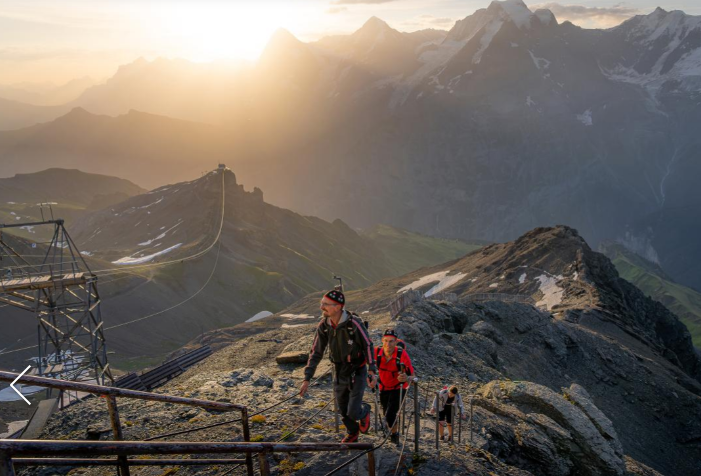
Top 15 Family Activities While Paragliding Over the Swiss Alps:
Families can also enjoy numerous activities while visiting this beautiful region:
Family Tandem Paragliding
Kids over certain ages can join parents on tandem flights for shared excitement.Hiking Trails
Explore family-friendly hiking trails that offer stunning views without high altitudes.Visit Adventure Parks
Try out zip-lining or rope courses available at various parks throughout the region.Lake Activities
Rent pedal boats or kayaks on nearby lakes like Lake Thun or Lake Geneva.Wildlife Watching Tours
Join guided tours to spot local wildlife such as chamois or ibexes.Mountain Biking
Rent bikes and explore scenic trails suitable for families.Visit Local Museums
Learn about Alpine culture at museums focused on history and art.Skiing Lessons
Enroll kids in skiing lessons during winter months at family-friendly resorts.Horseback Riding Tours
Enjoy guided horseback riding tours through picturesque landscapes.Cable Car Rides
Take scenic cable car rides to enjoy breathtaking views without hiking.Alpine Coaster Rides
Experience thrilling rides down mountain slopes suitable for all ages.Visit Chocolate Factories
Take tours at local chocolate factories to learn about Swiss chocolate-making processes.Explore Charming Villages
Visit quaint villages like Grindelwald or Lauterbrunnen for their charm and culture.Attend Local Festivals
Participate in seasonal festivals celebrating local traditions and foods.Relax at Family-Friendly Spas
Some spas offer family zones where kids can enjoy pools while adults relax.
Transportation Tips in the Swiss Alps:
Traveling through the Swiss Alps can be a breathtaking experience, not just for the stunning landscapes but also for the efficient transportation options available. Here are some essential tips to help you navigate the region seamlessly:
1. Utilize the Swiss Public Transport System
Switzerland boasts one of the most comprehensive public transport systems in the world, making it easy to travel between cities and explore remote areas in the Alps. The network includes:
Trains: The backbone of Swiss transportation, trains connect major cities and towns with frequent services. They are clean, reliable, and offer stunning views of the countryside.
Buses: Complementing the train system, buses reach areas that trains do not. Look for yellow postal buses, which are particularly useful for accessing mountain villages.
Boats: Passenger boats operate on many lakes, providing a scenic way to travel between towns and enjoy the views from the water.
2. Consider a Swiss Travel Pass
For those planning to use public transport extensively, investing in a Swiss Travel Pass can be economical. This pass allows unlimited travel on trains, buses, and boats across Switzerland and includes free entry to over 500 museums. It also offers discounts on mountain excursions, making it a great option for adventure seekers.
3. Check Cable Car and Funicular Schedules
The Swiss Alps are famous for their cable cars and funiculars that take you to high altitudes. Always check the operating hours of these services, especially during winter when they may close early (as early as 4 PM). Make sure to plan your descent accordingly to avoid being stranded at a mountain peak.
4. Renting a Car
While public transport is excellent, renting a car can provide flexibility, especially if you plan to visit remote areas or travel at your own pace. Roads in Switzerland are well-maintained and signposted, making driving relatively easy. However, be prepared for mountain roads that can be narrow and winding.
5. Use Local Transport Options
In towns like Interlaken or Zermatt, consider using local buses or shuttles that connect key points of interest. Many hotels offer free or discounted transport passes for guests, which can save you money during your stay.
6. Plan for Mountain Conditions
Mountain weather can change rapidly; therefore, always check weather conditions before traveling or embarking on outdoor activities. Ensure that your transportation plans account for potential delays due to weather.
7. Traveling with Bicycles
If you’re planning to explore by bike, many train stations offer bike rentals and allow bicycles on certain trains (especially slower regional ones). Always check specific train policies regarding bike transport and consider booking in advance during peak seasons.
8. Airport Transfers
Switzerland’s major airports—Zurich, Geneva, and Basel—are well-connected to the public transport network. Trains from these airports can take you directly into city centers or connect you with regional services heading into the Alps. Consider pre-booking shuttle services if you prefer a direct transfer to your accommodation.
9. Use Navigation Apps
Leverage technology by using navigation apps like Google Maps or local alternatives that provide real-time information about public transport schedules and routes. These tools can help you find the best connections and avoid delays.
10. Be Mindful of Peak Seasons
During peak tourist seasons (summer and winter), transportation services may be busier than usual. Be prepared for crowded trains and buses, especially on weekends and holidays. Booking tickets in advance can help secure your travel plans.
Navigating the Swiss Alps is made easy with an extensive public transport system that is both efficient and scenic. Whether you choose to travel by train, bus, or car, planning ahead will enhance your experience as you explore this beautiful region. By utilizing passes like the Swiss Travel Pass and being mindful of local conditions and schedules, you’ll ensure a smooth journey through one of the most picturesque landscapes in the world!
Wildlife Awareness While Paragliding:
Paragliding offers an exhilarating way to experience the stunning landscapes of the Swiss Alps, but it also raises important considerations regarding wildlife. Understanding how paragliding can impact local ecosystems is crucial for both pilots and conservation efforts. Here’s an exploration of wildlife awareness while paragliding.
1. Understanding Wildlife Sensitivity
Paragliders should be aware that many species, particularly birds and mammals, can be sensitive to human activities. For instance, studies have shown that free-flight activities, including paragliding, can increase stress levels in wildlife, particularly during critical periods such as nesting or breeding seasons. Birds may abandon nests or alter their feeding habits when disturbed by the presence of paragliders.
Birds: Many birds, especially raptors like eagles and hawks, may react negatively to paragliders. While some larger birds might share thermals with pilots without significant disturbance, smaller ground-nesting birds are particularly vulnerable to disruptions caused by flying activities.
Mammals: Species such as deer and bears have also been observed to exhibit stress responses to paragliding activities. These animals may flee from areas where they feel threatened, impacting their natural behaviors and habitats.
2. Regulations and Guidelines
To mitigate the impact on wildlife, various regulations are in place in many regions:
Buffer Zones: Some countries have established buffer zones around sensitive wildlife areas where paragliding is restricted or prohibited. These zones can vary in size depending on the species and their sensitivity to disturbances.
Flight Height Regulations: In certain areas, there are minimum altitude requirements for flights to minimize disturbances to wildlife below. Pilots should always adhere to these regulations to protect local fauna.
3. Best Practices for Pilots
Paragliders can take several steps to minimize their impact on wildlife:
Plan Flights Carefully: Before launching, check local guidelines regarding wildlife sensitivities. Avoid flying over known nesting sites or during critical breeding seasons.
Stay Informed: Engage with local paragliding clubs or conservation groups that provide information about sensitive areas and species. This knowledge can help pilots make informed decisions about where and when to fly.
Respect Nature: Maintain a respectful distance from wildlife when flying. If you notice animals reacting to your presence, consider altering your flight path or altitude.
4. Promoting Awareness
Education is key in fostering a culture of conservation among paragliders:
Training Programs: Paragliding schools should include wildlife awareness as part of their training programs. This education can help new pilots understand the importance of minimizing their ecological footprint.
Information Campaigns: Distributing brochures or creating online resources that highlight local wildlife and best practices for minimizing disturbances can raise awareness within the paragliding community.
5. Conservation Efforts
Engaging in conservation efforts can help balance the thrill of paragliding with the need to protect wildlife:
Participate in Local Conservation Initiatives: Many regions have conservation programs aimed at protecting sensitive habitats and species. Pilots can contribute by volunteering or supporting these initiatives.
Report Wildlife Sightings: Sharing data about wildlife sightings during flights can help researchers monitor populations and assess the impact of recreational activities on local ecosystems.
While paragliding offers an incredible opportunity to connect with nature from a unique perspective, it is essential for pilots to remain aware of their potential impact on wildlife. By following regulations, practicing responsible flying habits, and promoting awareness within the community, paragliders can enjoy their adventures while contributing to the conservation of the beautiful ecosystems they traverse. Balancing adventure with environmental stewardship ensures that both nature and sport can thrive together in the stunning landscapes of the Swiss Alps!
Travel Tips for Paragliding Over the Swiss Alps:
Paragliding in the Swiss Alps is an exhilarating experience that combines breathtaking views with a thrilling sense of freedom. However, to ensure a safe and enjoyable adventure, it’s essential to be well-prepared. Here are some comprehensive travel tips for paragliding in this stunning region:
1. Research Your Destination
Before booking your paragliding experience, research the best locations for flying. Popular spots like Interlaken, Zermatt, and Grindelwald offer unique views and conditions. Each location has its own characteristics, so choose one that aligns with your preferences—whether you want stunning mountain scenery or picturesque valleys.
2. Check Weather Conditions
Weather plays a crucial role in paragliding. Always check the forecast for wind speed, precipitation, and visibility on the day of your flight. Ideal conditions are typically calm winds and clear skies. If there are thunderstorms or strong winds predicted, it’s best to reschedule your flight to ensure safety .
3. Dress Appropriately
The weather in the Alps can be unpredictable and significantly cooler at altitude. Dress in layers to stay warm, and opt for wind-resistant clothing. Comfortable pants and closed-toe shoes are essential; avoid sandals or flip-flops for safety reasons. If it’s chilly, bring a zipped jacket to keep warm during your flight .
4. Communicate with Your Pilot
If you’re going tandem paragliding, don’t hesitate to communicate openly with your pilot. Share any concerns you may have about the flight, and ask questions about what to expect. Ensure you understand the safety instructions before takeoff; this will help you feel more comfortable during the experience .
5. Be Mindful of Weight Limits
Each paragliding company has specific weight limits for passengers, typically ranging from 110-120 kg (242-264 lbs) for tandem flights. Make sure you meet these requirements, as exceeding them can affect the safety and performance of the flight .
6. Stay Sober
Avoid consuming alcohol or drugs before your flight, as they can impair your judgment and coordination. Being fully alert will help you follow your pilot’s instructions effectively and enjoy the experience safely .
7. Capture the Moment Safely
If you want to take photos or videos during your flight, check with your pilot beforehand about bringing a camera or smartphone. Secure it properly to avoid losing it in the air, and consider using a strap or case designed for aerial activities .
8. Understand Takeoff and Landing Procedures
Familiarize yourself with how takeoff and landing work during paragliding:
Takeoff: You’ll run a few steps together with your pilot until the parachute catches the wind.
Landing: Your pilot will guide you through the landing process; typically, you’ll need to lift your feet off the ground as you approach landing .
9. Plan for Altitude Changes
As you ascend into higher altitudes, be prepared for potential changes in air pressure and temperature. If you’re sensitive to altitude changes, consider taking it slow when hiking up to launch sites to acclimatize properly .
10. Have Fun!
Finally, remember that paragliding is meant to be an enjoyable experience! Embrace the thrill of flying and take in the incredible views around you. Relax, smile for any photos or videos being taken, and savor every moment of this unique adventure .
Conclusion
Paragliding over the Swiss Alps is an unforgettable experience filled with stunning vistas and adrenaline-pumping excitement. By following these travel tips—researching locations, checking weather conditions, dressing appropriately, communicating with your pilot, and understanding safety protocols—you can ensure that your adventure is both safe and enjoyable. So gear up, take a deep breath, and get ready to soar through one of the most beautiful landscapes on Earth!

